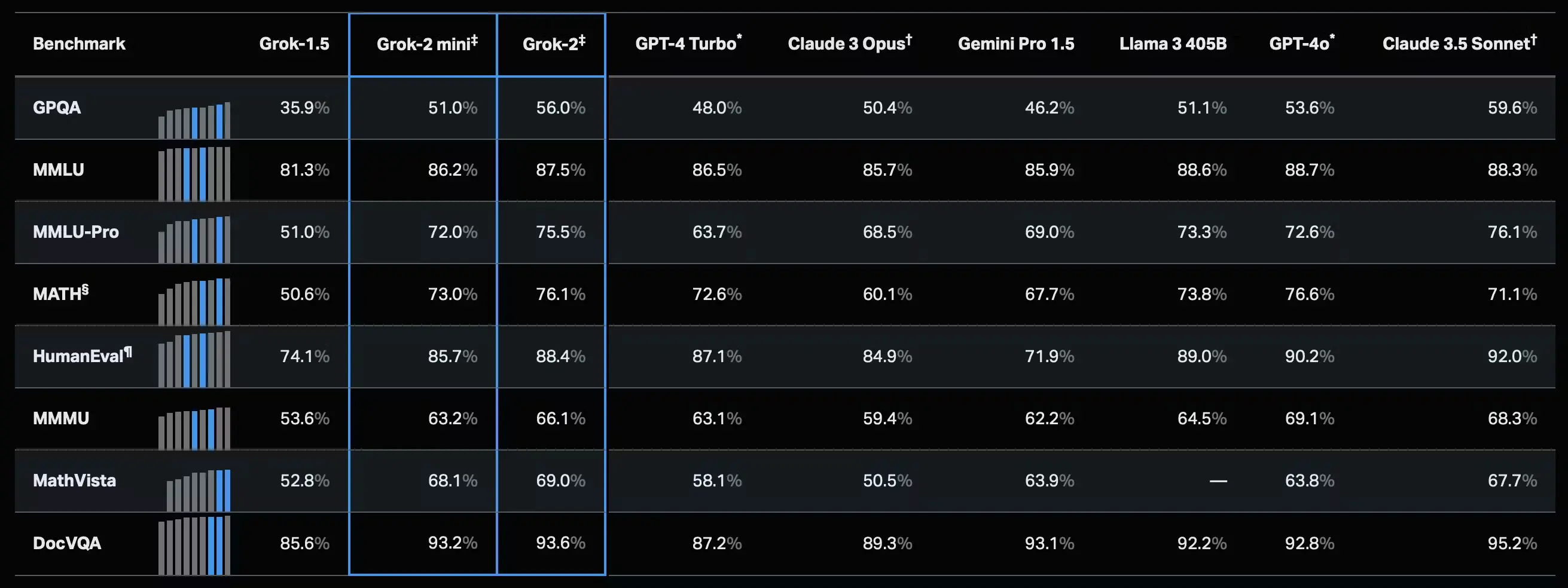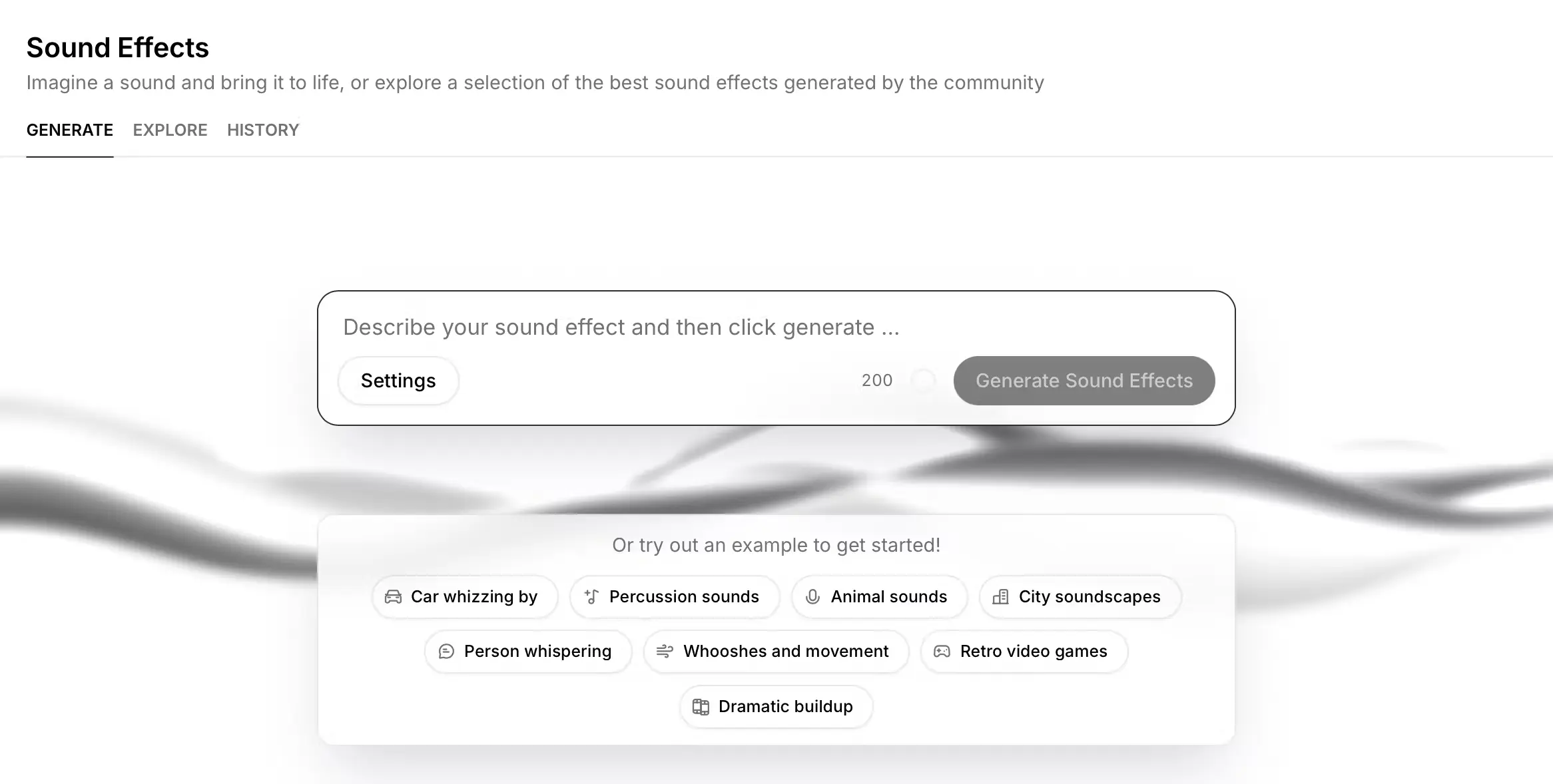xAI - Grok-2 shocks the world of AI
More topics: Large language models are not truly intelligent, and Sakana.ai reveals an AI Scientist

Hi AI Enthusiasts,
Welcome to this week’s Magic AI News, where we present you the most exciting AI news of the week. From the new capabilities of Grok-2 to the limitations of Large Language Models (LLMs), you can learn many new things today.
This week’s Magic AI tool can generate sound effects based on a user prompt. Stay curious! 😎
Let’s explore this week’s AI news together. 👇🏽
Top AI news of the week
🌅 xAI: Grok-2 shocks the world of AI
Elon Musk’s AI startup xAI released Grok-2 as a beta for X Premium users this week. According to xAI, Grok 2 has frontier capabilities in chat, coding, and reasoning. In addition, it outperforms Anthropic’s Claude 3.5 Sonnet and OpenAI’s GPT-4-Turbo.
The details:
- Two versions: Grok-2 mini and Grok-2
- Both models will be available through an enterprise API later this month.
- Grok-2 can now generate images directly on the X platform, powered by Black Forest Lab’s Flux.1 model.
- Grok-2 outperforms OpenAI’s GPT-4o and Anthropic’s Claude 3.5 Sonnet in some benchmarks, making it one of the best models on the market.

Our thoughts
Grok-2 is a significant improvement to Grok-1 if you look at the benchmark results. xAI is at the forefront with this model. With the huge amount of real-time training data from the X platform, the AI startup has a great future ahead.
But … Grok-2 has no limits like other AI models, which means you can generate critical images or texts. Politicians will probably push for restrictions here.
More information
- Grok-2 Beta Release - xAI Blog
🤖 Large language models are not truly intelligent
While some AI developers believed that large language models could surpass their current capabilities, a new study disproves this.
According to a research team from the Technical University (TU) of Darmstadt and the University of Bath, scaling large language models does not enable them to develop skills on their own.
- “The ability to follow instructions does not imply having reasoning abilities, and more importantly, it does not imply the possibility of latent, potentially-dangerous abilities.” - Citation from the paper
LLMs follow instructions from a user prompt. This has nothing to do with intelligence.
- “The distinction between the ability to follow instructions and the inherent ability to solve a problem is a subtle but important one, and bears significance to the methods employed in utilising LLMs and the problems they are tasked with solving.” - Citation from the paper
If the LLM follows an instruction via a prompt without thinking for itself, the results fit the task but do not make sense on a logical basis. Hallucinations occur.
Our thoughts
The scaling will perhaps make the models even more precise, but this will probably not be enough to achieve Artificial General Intelligence (AGI). Anyone waiting for AGI with GPT-5 will probably be disappointed.
There is one good thing about this: current LLMs will not become a danger to humanity. AGI is not around the corner!
More information
🧠 Sakana.ai reveals an AI Scientist
The AI company Sakana AI has unveiled “The AI Scientist”, the world’s first AI system capable of conducting scientific research independently.
Sakana AI releases a paper in collaboration with the Foerster Lab for AI Research at the University of Oxford and Jeff Clune and Cong Lu at the University of British Columbia about the new AI Scientist: Towards Fully Automated Open-Ended Scientific Discovery.
The details:
- The AI system generates research ideas, writes necessary code, and executes experiments.
- It summarizes experimental results, visualizes them, and presents its findings in a full scientific manuscript.
- The AI Scientist has already generated papers with new contributions in the field of machine learning.
- Each generated paper costs approximately $ 15.
- Limitations:
- The system has no vision capabilities, so it can’t fix visual issues with the paper.
- Some generated plots are unreadable, tables sometimes exceed the width of the page, and the page layout is often suboptimal.
- The system occasionally makes critical errors when writing and evaluating results.
Our thoughts
In the future, AI agents and researchers will be able to work side by side and so they can quickly achieve new research results. For example, AI can automate time-consuming tasks. The initial results of the AI Scientist are impressive, although the system still makes many mistakes.
More information
- The AI Scientist: Towards Fully Automated Open-Ended Scientific Discovery - Sakana.ai Blog
- The AI Scientist: Towards Fully Automated Open-Ended Scientific Discovery - arXiv
Magic AI tool of the week
This week’s Magic AI tool of the week is ElevenLabs.

ElevenLabs offers a new text-to-sound feature that allows users to generate new sounds based on a text prompt. You can try this feature for free!
Step-by-Step Guide:
- Sign up for free at elevenlabs.io*
- Navigate to Sound effects
- Enter a text description of your sound idea
- Click “Generate Sound Effects”. Enjoy your first AI-generated sound!
👉🏽 Try it for free*
Articles of the week
- Our Journey to Become a Data Scientist
- Mistral’s Codestral: Create a local AI Coding Assistant for VSCode
- A Visual Guide to Ensemble Methods + Practical Example
- Build a Local Chatbot in Minutes with Chainlit
💡 Do you enjoy our content and want to read super-detailed articles about AI? If so, subscribe to our blog and get our popular data science cheat sheets for FREE.
Thanks for reading, and see you next time.
- Tinz Twins





